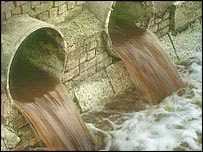The Story of Us: White skin is not about making vitamin D. It's about preventing dehydration.
Credit: © cristovao31 / Fotolia The Elias lab has shown that pigmented skin provides a better skin barrier, which was critically important for protection against dehydration. You're writing a story about the migration of ancient humans into Europe. As always, you need crisis as a way of furthering the story. Here's one, minor though it may seem: On the trip, members of your band with dark skin are much more likely to die of dehydration than members with a lighter skin tone. Really? Sure. Read the following which debunks the Vitamin D theory of why people with lighter colored skin survived as they followed the glaciers north after the last Ice Age. T he popular idea that Northern Europeans developed light skin to absorb more UV light so they could make more vitamin D – vital for healthy bones and immune function – is questioned by UC San Francisco researchers in a new study published online in the journal Evolutionary Biology. ...




